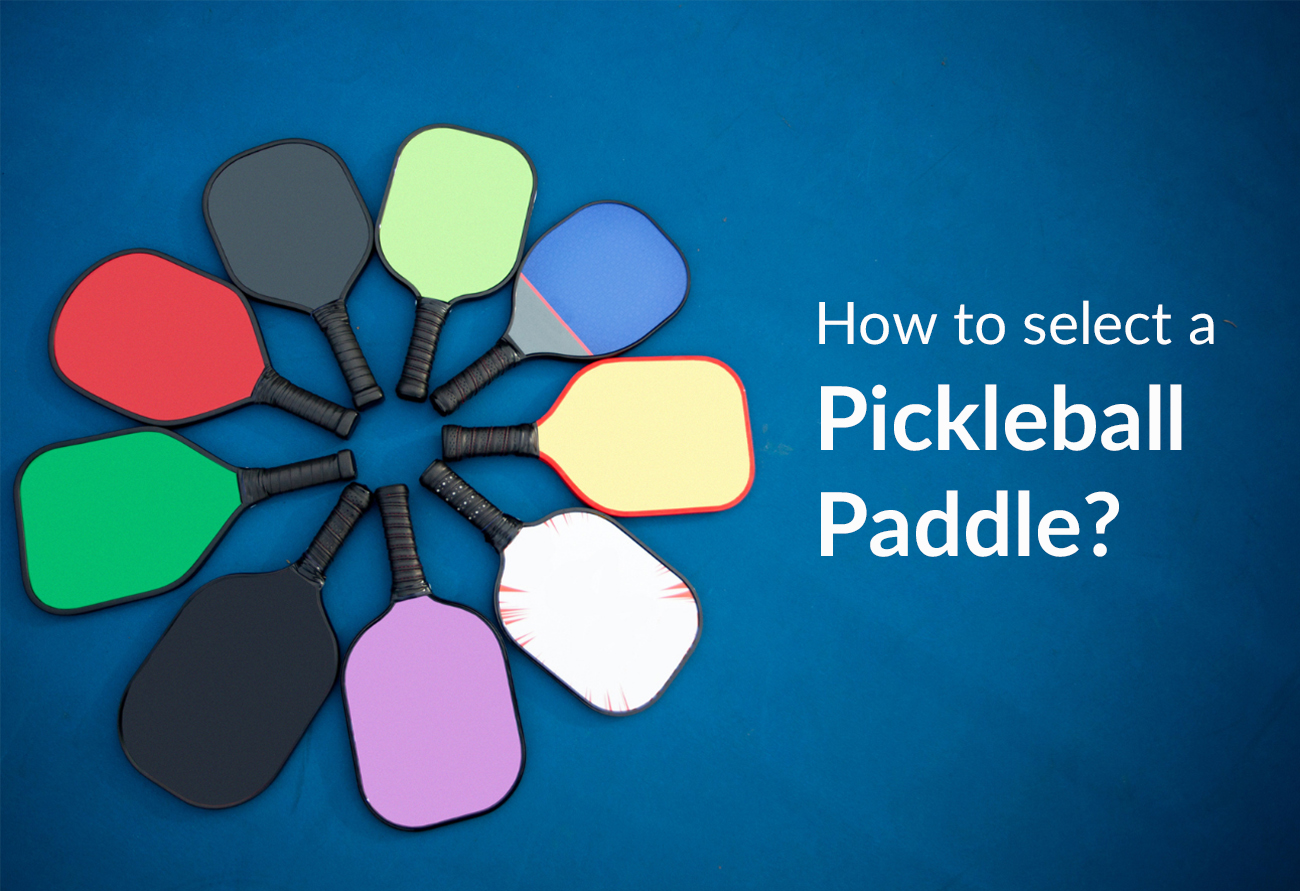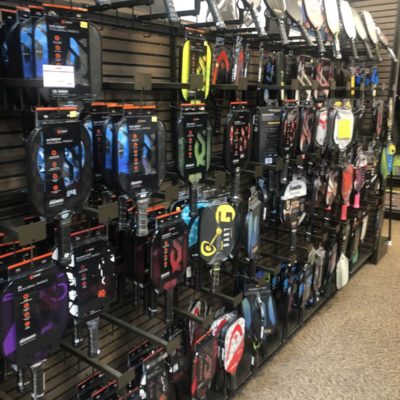
A Female’s Guide to Selecting a Pickleball Paddle

It’s time to purchase a pickleball paddle, and you couldn’t be more excited! That is, until you stroll into a sports equipment store or begin searching online, only to feel your excitement turn into confusion. One thing is for sure; this decision is way more complex than choosing your right shade at the nail salon!
You know what you want – a paddle that helps you feel and play your best on the court. However, there are so many paddles to choose from, it is easy to become frustrated and overwhelmed.
If you can relate, then you’ve come to the right place.
Let’s talk about the 6 most important things that you should consider when selecting a pickleball paddle, which will help you shop with confidence!
6 Important Things to Consider When Selecting a Pickleball Paddle.
1. Price.
Most pickleball paddles start at around $40 and fall into three categories –wood, composite, and graphite.
Paddles made of wood are the cheapest option (between $10-$40), but are usually heavy and produce a “pop” sound, which players may find irritating.
Composite and graphite paddles, on the other hand, are sold for $50-150 and are usually lighter, easier to maneuver and generally provide an overall better playing experience.
It’s often true that “you get what you pay for,” but the price of a pickleball paddle isn’t the only important factor to consider.
2. Weight.
Pickleball paddles can weigh anywhere between 5.5 and 14 ounces. The paddle’s material will greatly impact the weight, with wood paddles weighing 7.5-14 ounces and graphite and composite paddles weighing 6-9 ounces.
But what is the most ideal weight for a pickleball paddle?
Well, this depends on you!
Lightweight paddles (under 7.2 ounces) are renowned for deft control of the ball and quicker response time, especially when you’re close to the net. While they’re easier to swing, they are not great at absorbing vibration and this might stress your wrist and elbow when returning with multiple strong shots. A lightweight paddle is not the best fit for you if you are prone to tennis elbow.
Mid-weight paddles (7.3 to 8.4 ounces) fall in the “sweet spot” of both power and control. The PEP paddle (7.6 oz.) falls in the mid-weight range and is a great choice for any pickleball player, but especially those that suffer from tennis elbow. These types of paddles allow for powerful serves and returns without having to swing the paddle too fast. Plus, they’re also great for dinks and top-spins when you’re closer to the net.
Heavyweight paddles (over 8.5 ounces) are a good choice for players that want more power instead of control. These paddles are usually made of wood and while they increase the power in each shot, they also cause the player’s arm to fatigue faster. Therefore, heavy-weight paddles may be ideal for players with a very slow swing speed.
3. Grip Size.
Another factor to consider is the circumference of the paddle’s grip. Most paddle grip
circumferences fall within the 4 to 4 ½ inches range. The most common sizes are 4, 4 1/8, 4 ¼, 4 ½ inches.
Playing with a paddle that is too big for your palms may cause the paddle to continuously slip in your hand, since you can’t get a good grip. On the other hand, playing with a paddle that’s too small will cause you to clutch too tight, causing your palms to ache.
So how can you tell if a paddle’s grip is the right fit for your palm?
An informal, yet simple way to tell if a grip is right for you is the height test.
If you’re under 5’2”, then go for a 4-inch grip. If you are 5’3” to 5’8”, then choose 4 ¼ inch grip. For those above 5’9”, choose a 4 ½ inch grip.
When in doubt, choose a smaller grip size. You can always add grip tape to make up for the smaller size.
4. Edge Guard vs. Edgeless.
When choosing a pickleball paddle, you should pay attention to whether the paddle has an edge guard or if the paddle is edgeless.
An edge guard has two jobs: to hold the different layers of a pickleball together and to protect the paddle from damage when you accidentally scrape the ground while picking low balls.
The edge guard doesn’t interfere with your game, so this factor is just a matter of preference.
5. Facing.
The visible material on the surface of the paddle is known as the facing. There are three main types:
- Fiberglass/Composite: the most common facing which offers the greatest power.
- Graphite: less powerful than fiberglass/composite, but is tougher and offers more control.
- Carbon fiber: more durable and offers more control than graphite.
When choosing a facing, consider whether you value power, durability, or control the most.
6. USAPA Approval.
Whether you are a brand new pickleball player just starting out or are a seasoned player with aspirations to compete in tournaments, selecting a paddle with USAPA approval is undoubtedly a benefit.
By choosing a paddle that is USAPA approved, you can be sure that the manufacturer met certain standards such as the correct size, weight, and surface type. Plus, you can rest assured that the paddle is the highest quality.
Next Steps
Now that you know the basics, it’s time to get excited about choosing a new paddle! Armed with these tips, you can stroll down any pickleball paddle aisle with confidence.
We recommend that you start your paddle search by narrowing down your appropriate grip size, then rule out your options even further by choosing a weight, material, and price that fits your needs.
If you have any questions, feel free to reach out to us in the comments.
Happy dinking!